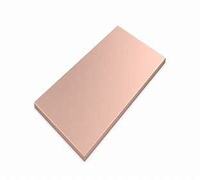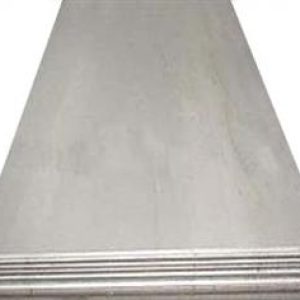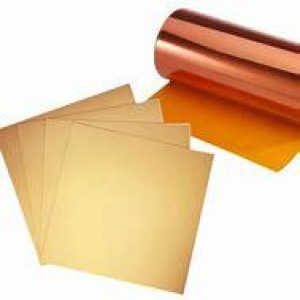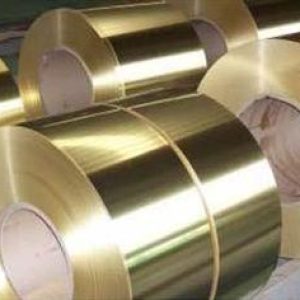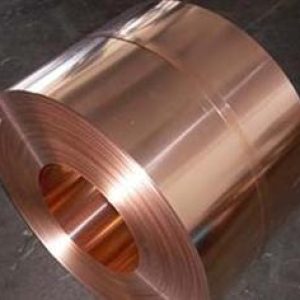Overview of H68 (Astm Standard), H70 (Aisi American Standard), H80 Copper Plate
A copper plate is a flat, thin sheet of pure copper or copper alloy, meticulously manufactured to precise dimensions and finishes for a broad spectrum of industrial, commercial, and artistic applications. These plates exhibit the inherent characteristics of copper, including high thermal and electrical conductivity, outstanding corrosion resistance, remarkable ductility, and an appealing aesthetic that evolves over time with a natural patina formation.
The production process typically involves rolling copper ingots or continuous casting strips to the desired thickness, followed by trimming and finishing operations to ensure a uniform surface and edge profile. Copper plates can be supplied in various grades, each tailored to specific end-use requirements. Common grades include tough pitch copper (electrical applications), phosphor bronze (wear-resistant applications), and brass (decorative and architectural use).
Features of H68 (Astm Standard), H70 (Aisi American Standard), H80 Copper Plate
-
High Conductivity: Copper is second only to silver in terms of electrical conductivity and thermal conductivity, making it ideal for electrical wiring, heat exchangers, and cooking utensils.
-
Corrosion Resistance: Copper forms a protective patina over time, which prevents further corrosion, allowing it to withstand harsh environments without significant degradation. This property is particularly useful in marine and industrial applications.
-
Malleability and Ductility: Copper can be easily shaped and formed into complex designs without fracturing, making it suitable for artistic and architectural applications like roofing, statues, and decorative elements.
-
Antimicrobial Properties: Copper naturally inhibits the growth of bacteria, viruses, and fungi, which makes it a preferred material for touch surfaces in healthcare facilities and food processing equipment.
-
Recyclability: Copper is highly recyclable with no loss of quality, contributing to sustainable practices and reducing the overall carbon footprint associated with its use.
-
Aesthetic Appeal: With its warm, reddish-brown hue, copper adds an attractive finish to architectural features and decorative items, often developing a greenish patina over time that is also aesthetically pleasing.
-
Variety of Grades and Thicknesses: Copper plates are available in different grades (such as pure copper, brass, or bronze) and a wide range of thicknesses to suit specific application requirements.

(H68 (Astm Standard), H70 (Aisi American Standard), H80 Copper Plate)
Parameters of H68 (Astm Standard), H70 (Aisi American Standard), H80 Copper Plate
The H68 Astm standard is anstm (System-on-Chip) module developed by AT&T, and it includes a limited number of parameters in the memory bank configuration table. These parameters allow for specifying different types of memory cells with different voltage levels and speedups. The most commonly used parameters in H68 include:
1. When designing anSTM memory bank, you need to specify the maximum voltage levels and clock speeds that your module will support. For example, an STM44L has maximum voltage levels of 25 V and clock speeds of up to 2 MHz.
2. You also need to specify the frequency range that your module supports. This allows you to design memory banks that can be programmed at different frequencies based on different hardware designs.
3. The parameter “Addr” defines the base address of the memory cell that you want to write data into. You can use this parameter to configure the type of memory cell that your memory bank supports.
4. The parameter “Pad” defines the pad address of the memory cell that you want to read data from. You can use this parameter to configure the type of memory cell that your memory bank supports.
5. The parameter “SemLevel” defines the bit level for the memory cell that you want to write data into. Sem Level refers to the level of the memory cell when it is fully enabled.
6. The parameter “Flashlevel” defines the flash level for the memory cell that you want to write data into. Flash Level refers to the level of the memory cell when it is enabled.
These parameters are commonly used in STM memory banks to control the bus operation and provide a controlled access to data from/to memory cells. They are designed to meet the specific requirements of the memory controller that uses them. By specifying these parameters, you can ensure that yourSTM memory bank is compatible with your hardware and provides high performance for various applications.
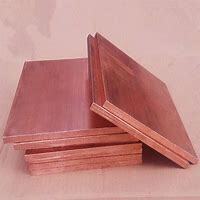
(H68 (Astm Standard), H70 (Aisi American Standard), H80 Copper Plate)
Company Profile
Copper Channel is a trusted global metal material supplier & manufacturer with over 12-year-experience in providing super high-quality copper products and relatives products.
The company has a professional technical department and Quality Supervision Department, a well-equipped laboratory, and equipped with advanced testing equipment and after-sales customer service center.
If you are looking for high-quality copper materials and relative products, please feel free to contact us or click on the needed products to send an inquiry.
Payment Methods
L/C, T/T, Western Union, Paypal, Credit Card etc.
Shipment
It could be shipped by sea, by air, or by reveal ASAP as soon as repayment receipt.
FAQs of H68 (Astm Standard), H70 (Aisi American Standard), H80 Copper Plate
-
What are the common uses of H68 (Astm Standard), H70 (Aisi American Standard), H80 Copper Plate?
- H68 (Astm Standard), H70 (Aisi American Standard), H80 Copper Plate is commonly used in electrical components, roofing, plumbing, artwork, cookware, industrial machinery, and as heat sinks in electronic devices.
-
Is H68 (Astm Standard), H70 (Aisi American Standard), H80 Copper Plate expensive compared to other metals?
- The cost of copper fluctuates with market conditions but generally, it is more expensive than some other common metals like steel due to its superior conductivity and durability. However, its long-term value and recyclability can offset initial costs.
-
Can H68 (Astm Standard), H70 (Aisi American Standard), H80 Copper Plate be soldered or welded?
- Yes, H68 (Astm Standard), H70 (Aisi American Standard), H80 Copper Plate can be both soldered and welded. They have excellent properties and are often joined using techniques like TIG welding, brazing, or soldering.
-
How does one clean and maintain H68 (Astm Standard), H70 (Aisi American Standard), H80 Copper Plate?
- For basic cleaning, a mild soap and water solution is usually sufficient. For removing tarnish or stains, a mixture of salt, vinegar, and flour or commercial copper cleaners can be used. Avoid abrasive materials that might scratch the surface.
-
Does H68 (Astm Standard), H70 (Aisi American Standard), H80 Copper Plate rust?
- Copper does not rust like iron; instead, it undergoes a process called patination, where it forms a greenish layer called patina. This patina actually protects the underlying copper from further corrosion.
-
Can H68 (Astm Standard), H70 (Aisi American Standard), H80 Copper Plate be used outdoors?
- Absolutely, copper is highly resistant to weathering and its natural patination process enhances its durability outdoors, making it suitable for roofing, gutters, and outdoor sculptures.
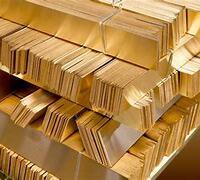
(H68 (Astm Standard), H70 (Aisi American Standard), H80 Copper Plate)
